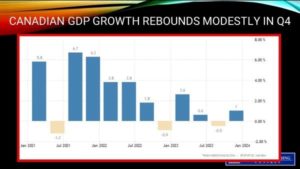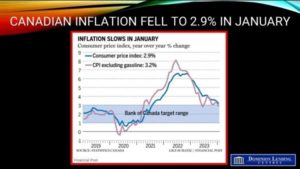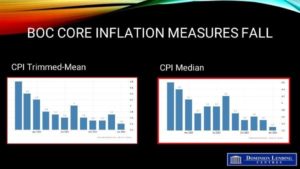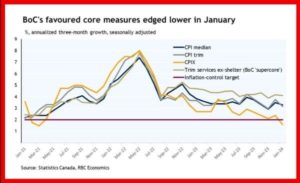After five straight holds of the Bank of Canada’s key interest rate that followed its hiking cycle of more than a year, economists say a rebound awaits the national housing market — but don’t expect a big surge just yet.
The central bank is expected to again hold its key rate steady when it announces its decision Wednesday, but it’s unclear what direction it will take next.
With modest cuts likely in store later this year — some forecasts call for those to begin as soon as June — it could take months before buyers are confident enough to come crawling back from the sidelines.
That uncertainty may keep some buyers cautious throughout the spring, said TD Bank economist Rishi Sondhi.
“I think it’s a bit of a muddy backdrop there and maybe that might be restraining some of the activity,” he said.
But Sondhi said Canada’s housing market is “akin to a bit of a coiled spring,” noting sales activity and prices typically jump when there’s a shift “that jolts the market” such as an interest rate cut.
“There’s significant pent-up demand out there, particularly in Ontario and B.C., so it just takes a bit of a spark.”
In its latest report on national home sales and pricing data, the Canadian Real Estate Association hinted that February could mark “the last relatively uneventful month of the year.”
“After two years of mostly quiet resale housing activity, there’s a feeling that things are about to pick up,” CREA chair Larry Cerqua said in a statement last month.
“At this point, it’s hard to know whether buyers are going to wait for a signal from the Bank of Canada or whether they’re just waiting for the spring listings to hit the market.”
Greater Toronto Area-Realtor Dean Artenosi called the current moment a “tipping point where the worst is behind us.” He said the central bank has signalled that interest rates have “levelled out” through its consecutive rate holds, and that has made buyers more optimistic.
“The mood and the mindset, the psyche, is that we’re back to a normal market,” said Artenosi, co-owner of Coldwell Banker The Real Estate Centre Brokerage.
“People have gotten comfortable … and are used to making the payments at these higher rates. Buyers are starting to come back into the marketplace. Obviously there’s talk of the rates starting to come down now and we’re seeing multiple offers again on some properties.”
Out West, activity cooled in March after 2024 got off to a red-hot start, said Tim Hill with Re/Max All Points Realty.
The Vancouver real estate agent said many of his clients now find themselves in a holding pattern while waiting for rates to fall. He said others are weighing the pros and cons of buying before that point in time, which is expected to spur price growth amid lower borrowing costs.
“For me, I’m feeling now that we’ve seen this kind of lull, I think April is going to be a really tell-tale month for how the rest of the spring goes.”
RBC assistant chief economist Robert Hogue predicted a “gradual” rebound later this year as the central bank’s rate-cutting cycle progresses, rather than a major uptick in activity following its first reduction.
He said there are some exceptions to that forecast, notably the Calgary market, which has remained strong despite elevated rates. Increased demand from interprovincial migration and below-average inventory have kept the market tight in that city, according to the local real estate board.
“That’s a market that continues to be pretty robust and we don’t see that changing,” Hogue said.
Despite pent-up demand, affordability remains a major issue in markets such as Toronto, Vancouver and Montreal.
“I don’t see it as much of an issue of being prudent or cautious, but more in terms of the budget constraint to buyers,” said Hogue.
He said Canada could see a “series of small waves” in some markets within the next few months, where activity picks up as some try to get ahead of interest rate cuts.
“For those mini-waves to be sustained, you need a critical mass of buyers making their way back into the market,” Hogue said.
“For that, our view remains that we need to see a significant drop in mortgage rates, which I think is more of a second half of 2024 story than the spring market.”
Artenosi said he’s urging his clients not to wait. While borrowing conditions could be more favourable in the months to come, he warned of other factors, including Canada’s growing population, that could make it more difficult to buy at an affordable price.
Statistics Canada’s live population tracker showed Canada’s population topped 41 million in late March, less than a year after hitting the 40-million milestone.
“Playing the waiting game is a mistake,” said Artenosi, who added those holding out may increasingly find themselves in bidding wars.
“There’s going to be no perfect scenario.”
This article was written for Canadian Mortgage Trends by Sammy Hudes










